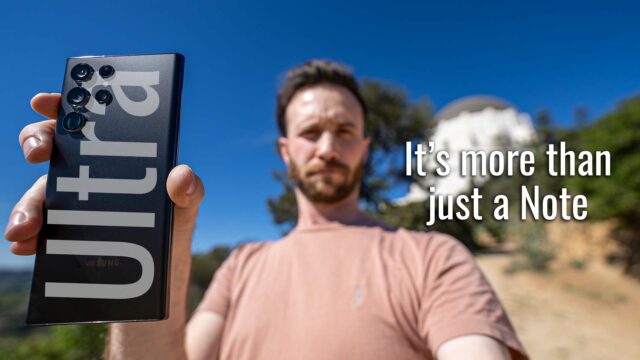Samsung Galaxy Book Ion Complete Walkthrough: Lightweight Powerhouse for Less?
Samsung is trying really hard to come back to the PC industry. Adding Galaxy to their laptop lineup to try and maybe garner some of that brand equity from their popular phones for the newly launched laptops.
Two of the latest of these laptops are the new Galaxy Book Flex and the Galaxy Book Ion which I have here. Both computers are very similar honestly with the major exception being the form factor (that maybe you could guess by the names). The Flex has a hinge to allow it to bend and has pen support, while the Ion, doesn’t.
Because of this though, the Ion is less expensive with similar power/battery/etc. so let’s start with that one today as I feel like it might appeal to more people.
Now, neither of these laptops are available here in the US but they have already been on sale in Korean for a while and are basically identical so I bought one from there and figured really quick let’s go through everything you need to know about this laptop in this complete walkthrough of the Galaxy Book Ion.
First thing you’ll notice, is that the photos of it on the internet aren’t quite right. It is far less colorful than those photos would have you believe. In photos it looks like maybe it has a similar paint job to the Note 10 with it’s rainbow effect but that’s just not quite the case. I’m sure this has to do with the material being magnesium instead of glass to some degree as it does have some of this but it’s just much less pronounced.
Now, because it’s made out of that magnesium, it’s super light considering the size which is great. My only complaint about this is that the magnesium, if you didn’t tell me it was magnesium, I’d have guessed it was plastic–it feels a bit cheap but again the weight is the trade off for that.

It weighs only about 2.7 lbs for the 15″ model which I have here and, considering the specs that we’ll get to in a bit, that’s pretty light.
For the screen, we have a 13.3″ and a 15″ model. That screen is QLED instead of LCD so we have a much higher contrast ratio, deeper blacks, brighter colors, etc. It looks nice, for sure. The aspect ratio is 16:9 and we have small 5.2mm bezels.
Above that screen, we have a 720P webcam that looks and sounds like this.
Opening the lid, you’ll notice we have a hinge that props up the keyboard at an angle which is to make typing more ergonomical but also gives the fans under the computer extra room to breathe which helps with cooling.

Under the screen is our keyboard. It’s clicky enough for me to type on (better than the Galaxy Book S I did a video on at least) but it’ll take some getting used to personally. For one, it’s offset. So the keys are all shifted slightly to the left and partially that’s to make room for the proper number pad on the right. Excel users will love that they included that, I’m sure, but anyone who doesn’t crave that numpad will probably be a little annoyed at it like I am–at least until you get used to it.

Now, that keyboard is also backlit and unlike that Galaxy Book S you can hit function and F9 to change the backlight to be brighter or dimmer which is nice.
Beneath that, we have the thankfully Microsoft precision trackpad which if you aren’t familiar is just the new way Microsoft and Windows are handling the drivers for the trackpads on newer laptops instead of letting each trackpad manufacturer handle them. Long story short, it makes for a funny enough more precise trackpad and it can use Windows gestures, and other features–it’s just better than not having it and long over due in my opinion for Windows.

Just like the keyboard, the trackpad is also offset so you’ll have to just get used to that, as well. Or not, and just use a separate mouse like I have to on all laptops anyway.

If you do that though, there is also an extra benefit on this laptop which is that the trackpad doubles as a Qi charger and you can use it to charge any qi-capable phone or accessory which I think is really clever. Downside is that you can’t use the trackpad of course while it’s charging something so you basically need that separate mouse if you want to use it while charging. That charger, by the way, is turned on and off by hitting function and F11.

For ports, we have a Thunderbolt 3 USB-C port, one USB-A 3.0 port, and a 3.5mm audio jack all on the left.
On the right, we have an HDMI and USB-A 3.0 port along with a MicroSD card slot that you can take out with a SIM card tool to add extra storage which is handy to add inexpensive extra space.
For audio, we have AKG tuned stereo speakers.
Inside the top of the line 15-inch model that I have here, we have a Intel i7-10510U 10th-gen processor paired with 16GBs of DDR4 RAM and we have a 1TB NVMe SSD (that is not replaceable, by the way).
For graphics the 15″ model (and the reason I went for it over the 13″) has an NVIDIA MX250 GPU with 2GBs of memory. Now, I’ve used another laptop a while back with this GPU and can say that it can at least handle some video editing in 1080p or using proxies so long as there isn’t a lot of graphics or effects added but for my 4K and 6K RAW video I shoot, I can’t really use it for that, just for anyone wondering about video editing on this.
Speaking of though, here are some benchmark results for anyone curious about where it stands against other laptops you might be looking at as a gamer.
For connectivity, we have Wifi 6 & Bluetooth 5.0.
For battery life, Samsung claims 21 hours using the 66.9Wh battery that’s inside here. But, let’s do an albeit not-very-scientific-test and see how it lasts in a generic video playback test at 1080p on 50% brightness on the recommended power setting.
The device is capable of fast charging using USB-C to give you 3 hours of use on 10 mins according to Samsung. But, again, let’s test that with it’s original charger.
And while we’re at it, I’m wondering if, since it’s USB-C, you could use a battery pack with USB-C power deliver built in so let’s see how quickly that charges it, as well.
For software, we have Windows 10 and on this Korean model at least, there’s a decent amount of bloatware pre-installed from games to Booking.com (which clearly Samsung has a deal with since it’s on a few of their devices I’ve used), etc. but thankfully you can easily uninstall any of it by right-clicking and clicking uninstall.

And there you go, the Galaxy Book Ion is available in Korea right now and is coming to the US in the coming months. I’ll leave a link below to the cheapest place I could find both models once available for anyone who wants to check them out. The starting price for the Ion in Korea is about $1,240 and the top model is about $2,180. The price in the US is unknown at the moment but that at least gives you a good starting point.
Thanks for reading!
















